Politics
Richard Nixon, Cottage Cheese, and Ketchup
Richard Nixon's favorite snack was reportedly cottage cheese topped with ketchup.A 1960 article in the LA Times treated this as noncontroversial personal information about the then-presidential candidate, noting that he had acquired a taste for this unusual delicacy from his Quaker grandmother.
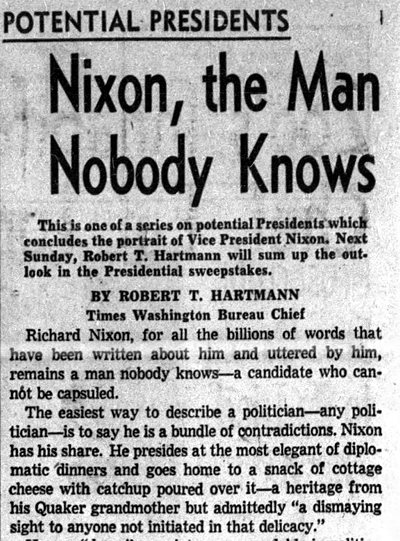
Los Angeles Times - Mar 14, 1960
However, by the 1970s Nixon's team was downplaying his fondness for this snack. Helen Smith, the first lady's press secretary, dismissed it as overblown rumor.
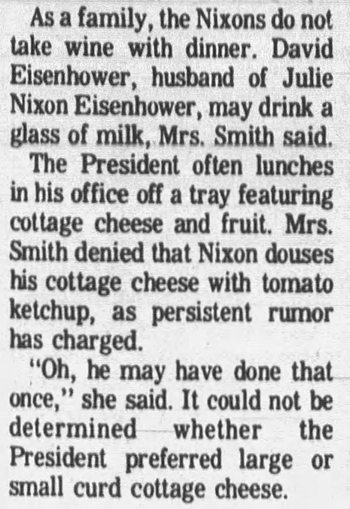
Casper Star Tribune - June 5, 1973
Similarly, White House chef Henry Haller, in his book The White House Family Cookbook, denied he had ever seen Nixon eat such a concoction: "If the President ever doused his cottage cheese with catsup, I never saw him, and doubt he ever did."
I suspect the truth is that Nixon enjoyed this snack when he was younger, but didn't continue eating it when he was President. Regardless, the combination of cottage cheese and ketchup was definitely associated with Nixon in the public mind, and it inspired one odd work of art.
In 1973, on the eve of Nixon's second inauguration, the sculptor Carl Andre dumped 500 pounds of cottage cheese on the floor of the Max Protetch gallery in Washington, DC. He then topped this with 10 gallons of ketchup. He called the work 'American Decay'. However, it smelled so bad that it all had to be removed the next day.
More info: Interview Magazine
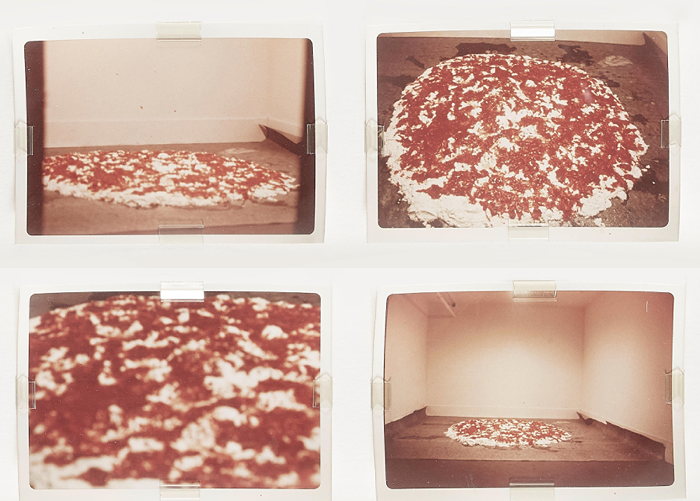
'American Decay'. Image source: bonhams
Posted By: Alex - Mon Oct 18, 2021 -
Comments (0)
Category: Art, Food, Politics, 1970s
Miss Kickback
At the end of each year, South Carolina would reward "kickbacks" of surplus state funds to the counties. In honor of this annual event, in 1962 and '63 the Columbia, SC Chamber of Commerce decided to hold a "Miss Kickback" beauty contest.The winner for 1962 was Jayne Arnold, and in 1963 Ann Warr was awarded the title.
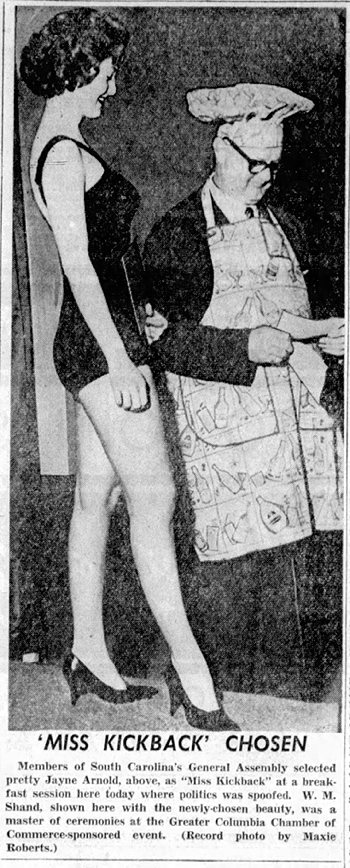
The Columbia Record - Jan 10, 1962
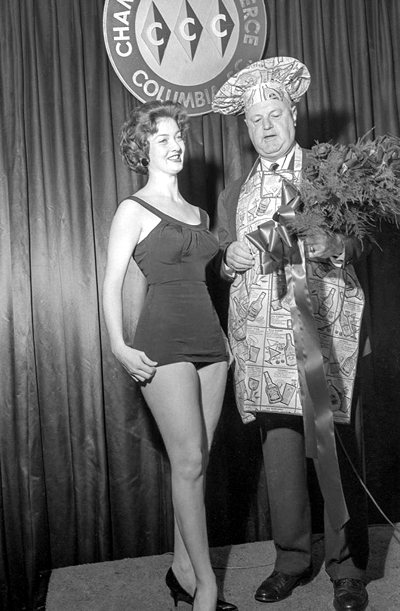
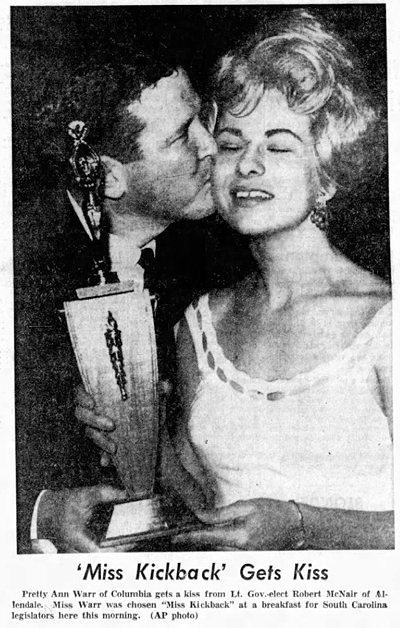
The Columbia Record - Jan 9, 1963
Posted By: Alex - Mon Oct 11, 2021 -
Comments (1)
Category: Awards, Prizes, Competitions and Contests, Politics, 1960s
Cultural Revolution Ballet
Posted By: Paul - Wed May 12, 2021 -
Comments (2)
Category: Dictators, Tyrants and Other Harsh Rulers, Political Correctness, Politics, 1970s, Asia
Campaigned in armor
I think elections would be greatly improved if all politicians campaigned while wearing full suits of armor.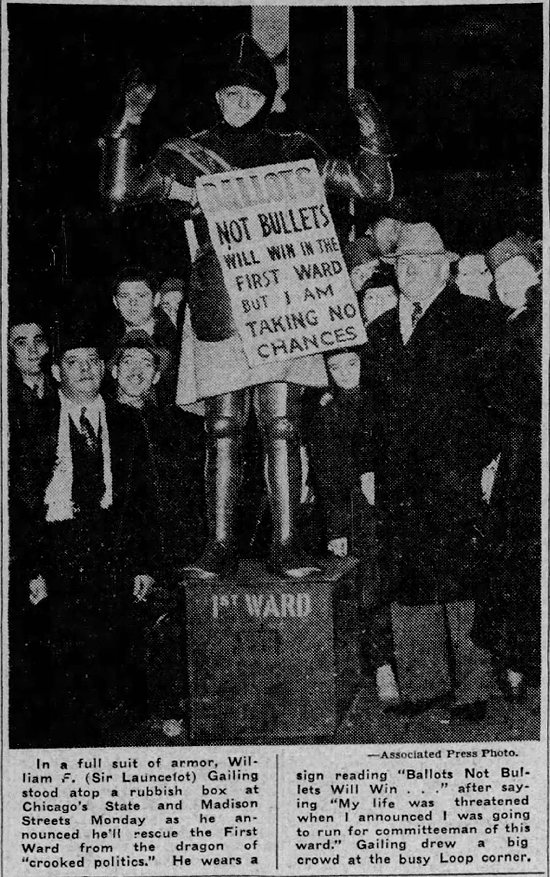
Fort Worth Star-Telegram - Feb 14, 1940
Posted By: Alex - Sat May 08, 2021 -
Comments (1)
Category: Politics, 1940s
Diplomacy Rap
The US Ambassador to Vietnam, Daniel Kritenbrink, recently released a rap video, in collaboration with Vietnamese rapper Wowy, to mark the Lunar New Year Holiday.While it may be rap, it also fits into the genre of cringe.
Kritenbrink's rap starts soon after the one-minute mark.
Posted By: Alex - Sat Feb 13, 2021 -
Comments (0)
Category: Ineptness, Crudity, Talentlessness, Kitsch, and Bad Art, Music, Politics
The Waffle Party
With all this talk of rogue Republicans forming a new party, I hope they choose a name as evocative as that of Canada's The Waffle.
Source.
Posted By: Paul - Fri Feb 12, 2021 -
Comments (1)
Category: Odd Names, Politics, 1960s, 1970s, North America
“The Great Society” Comic Book
Read the whole thing here.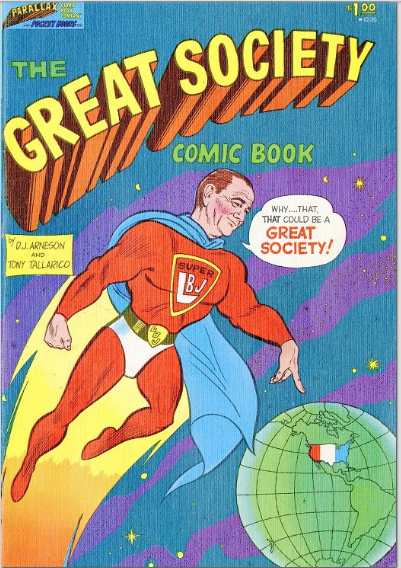
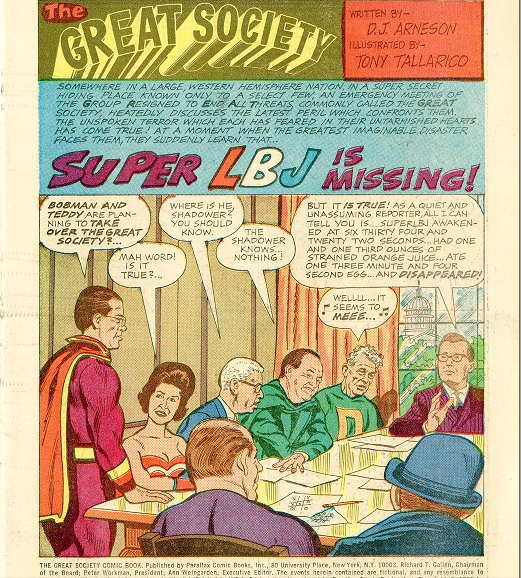
Posted By: Paul - Tue Feb 02, 2021 -
Comments (2)
Category: Humor, Parody, Politics, Comics, Superheroes, 1960s
Rodney Fertel’s Gorilla Campaign
1969: Rodney Fertel ran for mayor of New Orleans on what he called the "primate platform". He promised that, if elected, he would "Get a gorilla for the zoo." This was his primary campaign issue. He campaigned by standing on street corners, sometimes dressed in a safari outfit, sometimes in a gorilla suit, handing out miniature plastic gorillas to passers-by.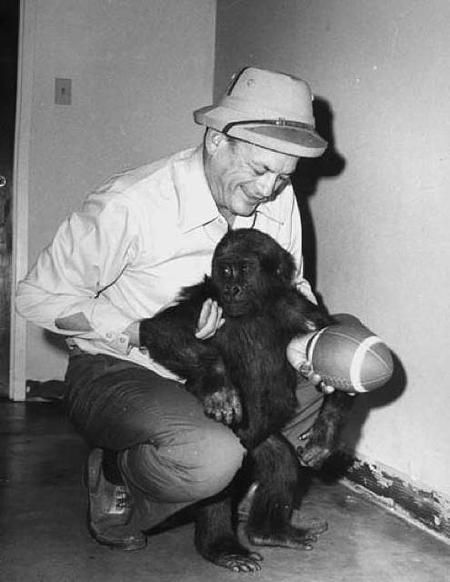
Rodney Fertel with a baby gorilla
Fertel lost the election, receiving only 310 votes, but he kept his promise by donating a pair of West African gorillas the following year to New Orleans' Audubon Zoo, at his own expense.
Incidentally, Rodney was the former husband of Ruth Fertel, who founded Ruth's Chris Steak House. Fertel's son has written a book about his parents titled The Gorilla Man and the Empress of Steak: A New Orleans Family Memoir.
More info: nola.com
Posted By: Alex - Tue Nov 03, 2020 -
Comments (3)
Category: Animals, Politics, Strange Candidates, 1960s
Landslide—the electoral college board game
Kenneth J. Gross and Sebron Koster were granted a patent in 1960 for Landslide, an electoral college board game. Players moved their pieces around the board trying to gain enough electoral college votes to start a 'landslide'. If you want to play it, the rules are below.As far as I can tell, their game was never sold in stores. However, there have been two other board games called Landslide that did make it to market (in 1971 and 2004). Both involved acquiring electoral college votes but were otherwise different than the 1960 version.
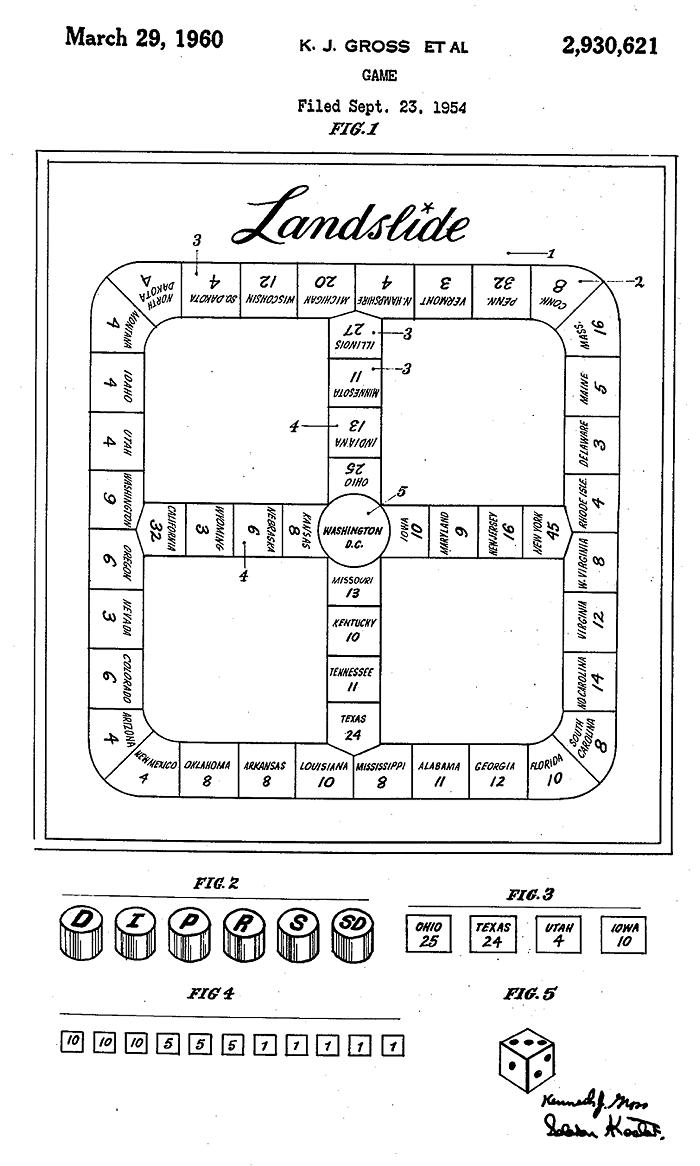
At the start of the play of a game each player selects his political party and takes his marker and tokens to match. Each player or candidate rolls the die and the candidate who rolls high die opens the play. He is succeeded in turn by each candidate in a clockwise direction. All candidates begin their campaign from the central segment, viz. Washington, D.C.
The number appearing on the die indicates the number of segments (States) which the candidate may move his marker and the number of electoral votes he wins in the State attained. He places his marker on that State and beside it his tokens corresponding to the number of votes thereby won in that State.
On each turn a candidate may move in any direction he chooses. The choice of routes allowed to candidates enables them to exert an influence on the development of their campaigns. In passing through a junction of three States he may traverse only two of the States in the course of any one move. He may not reverse his direction of movement in the course of one move. A candidate may not land on nor pass through a State occupied by another candidate's marker. If the movement of a candidate is blocked by the markers of other candidates in such a manner that he cannot move his marker to the full extent of his throw of the die, then he loses that turn. A candidate must move if possible.
A candidate must return to Washington, D.C. at any time that his throw of the die could place him there, providing that Washington, D.C. is unoccupied.
The number of electoral votes of a State won by a candidate is indicated by his tokens placed alongside that State. The entire electoral vote of a State is won by the first candidate to obtain a majority of the electoral votes of that State. When a State is won by a candidate he removes the card of that State and all the electoral vote tokens on that State are returned to their respective candidates.
States that have not been won are indicated by the presence of the State cards still beside them. Any candidate may land on a State that has been won by another candidate irrespective of the presence or absence of electoral votes remaining unacquired.
Whenever a candidate lands on Washington, D.C., he has the right to call a “caucus' if he so desires. When a caucus is declared all candidates count, the electoral votes of the States they have won completely, as indicated by the State cards in their possession. The outstanding electoral votes relating to States not yet won are also counted. Should the candidate with the least number of electoral votes be unable to win the election even by winning all the electoral votes of the States which are not yet won completely then he is eliminated as a presidential candidate. Only one candidate may be eliminated on each caucus.
If on the calling of a caucus, the tally of electoral votes indicates that every candidate still has a chance to win the election assuming his acquisition of all outstanding electoral votes, then the candidate calling the caucus loses all his electoral votes on States not won completely; that is he removes all his electoral vote tokens from the board.
The electoral vote tokens of the eliminated presidential candidate on the States not completely won are removed from the board. The electoral votes of the States completely won by the eliminated candidate are divided among the remaining candidates according to the geographical distribution set out in the table above. In other words the candidate with the most electoral votes from the Eastern States, takes all the Eastern States from the eliminated candidate and similarly for the other geographical groups of States.
The presidential election is won by the first candidate who captures 266 or more electoral votes.
Posted By: Alex - Sun Nov 01, 2020 -
Comments (1)
Category: Games, Politics, Patents, 1960s

| Who We Are |
|---|
| Alex Boese Alex is the creator and curator of the Museum of Hoaxes. He's also the author of various weird, non-fiction, science-themed books such as Elephants on Acid and Psychedelic Apes. Paul Di Filippo Paul has been paid to put weird ideas into fictional form for over thirty years, in his career as a noted science fiction writer. He has recently begun blogging on many curious topics with three fellow writers at The Inferior 4+1. Contact Us |




